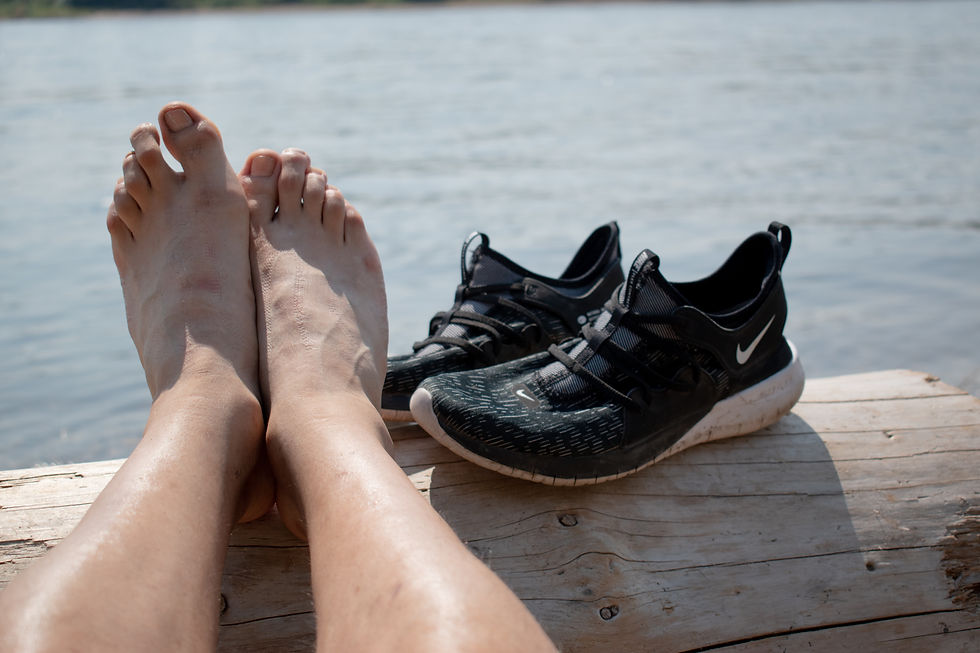
Ankle sprains are one of the most common injuries that occur in sports as well as in the General population. In fact, there are an estimated 2 million ankle sprains per year.
Although they are common, ankle sprains shouldn’t be brushed aside. Without treatment, an ankle sprain could lead to more serious complications. We are going to explain ankle sprain treatment options and why they are important.
Let’s take a look!
What Is an Ankle Sprain
An ankle sprain is defined as an injury resulting from a stretch of ankle ligaments beyond its limits. The most common ankle sprains are lateral ankle sprains, with the injury to the outside of the ankle/foot.
Ankle sprains can have the following signs – ecchymosis or redness/bluishness of the skin, swelling, point tenderness with pressure, reduced ankle range of motion, increased ligamentous laxity, reduced muscle strength of ankle muscles, and pain. You may find one or more of these signs after an ankle sprain based on the severity of the injury.

Causes of Ankle Sprains
The causes of ankle sprains can be multiple factors like twisting an ankle while playing sports, walking on an uneven surface, weaker foot and leg muscles that provide ankle stability, previous injuries to ankle ligaments, and abnormal proprioception.
Other potential ankle injuries which present similar to ankle sprains are
fractures, high-ankle sprain, cuboid syndrome, medial-ankle sprain, and osteochondral (OCD) lesion
Your Physiotherapist/Chiropractor can do a thorough assessment and rule out the risk factors and help you in identifying the risk factors through functional screening and orthopedic tests.
Without proper treatment and rehabilitation, the chance of recurrence of ankle sprain is high making it more likely that you will injure it again. Repeated ankle sprains can lead to long-term problems, including chronic ankle pain, arthritis, and ongoing instability.
How to Prevent an Ankle Sprain
Here are some tips to reduce the incidence of ankle sprains:
Warm-up before exercise and sports activities
Avoid uneven/slippery surface for sports and physical activities
Wear shoes that are made for your activity
Take breaks during activities to avoid fatigue

Treatment for Ankle Sprain and What to Do
Based on the physical demand, age, fitness level, and type of injury, your ankle sprain will need to be managed differently. Treatment for ankle sprains and what to do will vary and needs to be specific in order to get the best possible outcomes and to reduce its effect on your daily and future life.
Injury can be managed with a combination of immobilization, rest, braces, graded activities, strengthening exercises, and proprioception training along with sports or activity-specific rehabilitation. For physically active people who participate in sports, treatment plans will include agility training and high-intensity activities to improve conditioning.
If your pain is excruciating and if you are unable to bear weight on your foot or if your symptoms are not getting better within a couple of days after the incident consult a medical professional for assistance. Irrespective of the severity of an ankle sprain, it is always advisable that you see a good physiotherapist or chiropractor to help you get back to your optimal best.
What You Should Do About Ankle Sprain Treatments
The severity of an ankle sprain varies and so will the ankle sprain treatment. For this reason, you should always consult a physiotherapist or chiropractor so that the correct treatments are taken to prevent further injury or improper healing.
If you have questions about ankle sprains or need treatment options, you can always contact us and we will help you right away!
Sources:

Comments